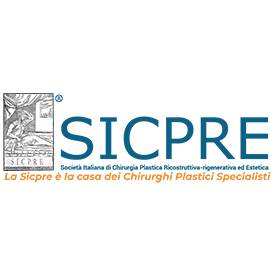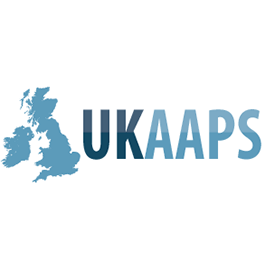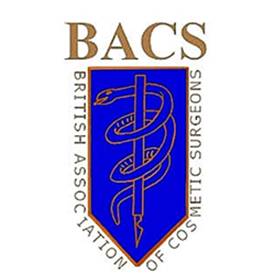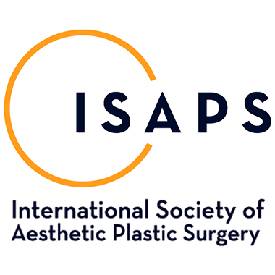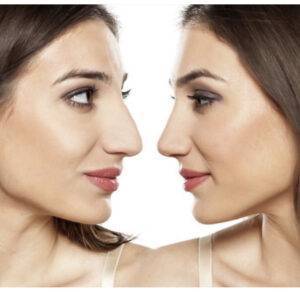
Asian rhinoplasty, also known as Asian nose surgery or Asian nose job, refers to a type of cosmetic surgery that is performed to alter the shape and appearance of the nose in individuals of Asian descent. The goals of Asian rhinoplasty may differ from traditional rhinoplasty procedures, as there are often distinct anatomical characteristics of the Asian nose that individuals might want to address.
Dr Frati is dubbed by many as the Surgeon to the Stars, if you are wanting to price up a cost for either your Asian rhinoplasty, ethnic rhinoplasty or a traditional nose job in London or Manchester, book an initial consultation with Dr Frati, his team would be more than happy to guide you through the next steps. In your consultation, Dr Frati will be able to ask you all the right questions, and determine which rhinoplasty procedure is right for you, and therefore provide an appropriate rhinoplasty cost.
Take a look at our Nose Job Before and after pictures.
Interested to know more about what Dr. Frati can do for you?
Asian Rhinoplasty with Dr. Frati
If you’re interested in learning more about the range of Rhinoplasty services offered by the renowned Dr. Frati or have any other cosmetic inquiries, please feel free to reach out to our approachable team. You can complete a contact form, send an email to info@dr-frati.com, or use the phone numbers provided below based on your preferred clinic location.
To inquire about our Rhinoplasty in London, feel free to dial 020 3633 2619.
For queries related to our Rhinoplasty in Manchester, kindly call 0161 327 2139.
We’re excited for you to call!
Asian Rhinoplasty vs Traditional Rhinoplasty
Asian rhinoplasty and standard rhinoplasty (often referred to as traditional rhinoplasty) differ primarily in their goals, techniques, and considerations. These differences stem from variations in nasal anatomy, cultural aesthetics, and individual preferences. Here’s how Asian rhinoplasty differs from standard rhinoplasty:
- **Anatomical Differences:** Asian noses often have distinct anatomical characteristics, such as lower nasal bridges, wider nostrils, and less projected nasal tips. Asian rhinoplasty takes these features into account to create results that align with the patient’s ethnicity and desired aesthetics.
- **Goals and Aesthetics:** The goals of Asian rhinoplasty tend to differ from those of standard rhinoplasty. While standard rhinoplasty often seeks to reduce the size of the nose or refine its features, Asian rhinoplasty may focus on augmenting the nasal bridge, refining the tip, and narrowing the nostrils to enhance facial harmony while maintaining ethnic identity.
- **Bridge Augmentation:** In Asian rhinoplasty, one common goal is to augment the nasal bridge to achieve a more prominent and defined appearance. This may involve using implants, cartilage grafts, or other materials to add height to the bridge.
- **Nasal Tip Refinement:** Asian rhinoplasty often involves reshaping and refining the nasal tip to create a more defined and projected look. The goal is to maintain a natural appearance while addressing the characteristic rounder tip seen in many Asian noses.
- **Nostril Narrowing and Alar Base Reduction:** Widening of the nostrils and flaring of the alar base are common concerns for some Asian individuals. Asian rhinoplasty can include procedures to narrow the nostrils and reduce the alar base for improved proportions.
- **Cartilage Grafting Techniques:** Cartilage grafting is frequently employed in Asian rhinoplasty to provide structural support and achieve specific aesthetic goals. This can involve using cartilage from the septum, ear, or rib to enhance various areas of the nose.
- **Cultural Considerations:** Asian rhinoplasty takes into account cultural aesthetics and preferences. Surgeons aim to create results that are culturally sensitive and respect the patient’s ethnic identity.
- **Individualised Approach:** Asian rhinoplasty is highly individualized, with surgical plans tailored to the patient’s unique facial features, goals, and concerns. Surgeons work closely with patients to understand their desires and create a personalized treatment plan.
- **Less Aggressive Reduction:** In standard rhinoplasty, reduction techniques may be more aggressive to achieve a smaller nose. In Asian rhinoplasty, reduction is often more subtle, focusing on enhancing specific features without altering the overall ethnic appearance.
It’s important to note that both Asian rhinoplasty and standard rhinoplasty require the expertise of a skilled and experienced surgeon. Choosing Dr Frati, who specialises in these specific types of rhinoplasty is crucial to achieving safe and satisfactory results that align with your goals.


Rhinoplasty Step by Step Guide
For a basic guide to asian rhinoplasty step by step, then follow this guide below. This is a general description and each procedure individual to your needs.
Anaesthesia: Asian Rhinoplasty is mostly conducted under general anaesthesia.
Incision: The surgeon makes incisions either within the nostrils or along the columella to access underlying cartilage.
Reshaping the Bones: Depending on the desired outcome, the surgeon employs various techniques to modify the bone structure of the nose. This could involve repositioning or resetting the nose by breaking it, or the use of small grafts to add or remove bone.
Reshaping the Cartilage: The cartilage, which offers structural support to the nose, may also be reshaped. This can involve removing cartilage, or again, introducing grafts to specific areas.
Closure of Incisions: Incisions are closed using sutures or surgical tape.
Placement of Splint: A splint can be fixed to the exterior of the nose for preservation of the new shape and to safeguard it during healing.
Recovery: After the procedure, patients will require a recovery period for several weeks. Swelling and bruising will regress, and the results will become apparent after a few months.
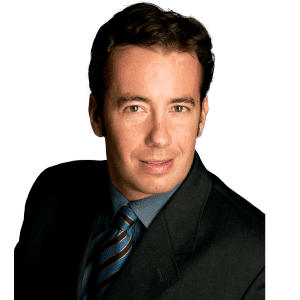
Dr Frati Cosmetic Surgery was established by internationally renowned surgeon to the stars Dr Riccardo Frati. Dr. Frati has featured on ITV’s This Morning, GMTV, featured in The Times, The Daily Mail, The Independent, The Daily Star, The Sun, FHM and 10 Years Younger; with countless mentions in celebrity magazines, online magazines and makeover reveals.
What are common reasons to get Asian Rhinoplasty?
Asian rhinoplasty is a type of cosmetic surgery tailored to individuals of Asian descent, focusing on enhancing the appearance and function of the nose while preserving the natural ethnic features. Common reasons for getting Asian rhinoplasty may include:
1. Augmentation: Many Asian individuals seek rhinoplasty to augment or enhance the nasal bridge. This can involve adding height and definition to the bridge to create a more prominent and balanced appearance.
2. Nasal Tip Refinement: Asian rhinoplasty can include reshaping and refining the nasal tip. This may involve refining a bulbous or flat tip to achieve a more aesthetically pleasing shape.
3. Alar Base Reduction: The surgery may involve narrowing the width of the nostrils or reducing alar flare to achieve better facial harmony.
4. Correction of Deviated Septum: Some individuals choose rhinoplasty to correct a deviated septum, which can lead to breathing difficulties.
5. Correction of Asymmetry: Correcting nasal asymmetry or addressing any pre-existing abnormalities can be a motivation for Asian rhinoplasty.
6. Ethnic Preservation: Many patients seek Asian rhinoplasty with the goal of preserving their ethnic identity while enhancing their natural features.
7. Functional Improvements: While the primary focus of rhinoplasty is often cosmetic, some individuals may also require functional improvements to address breathing difficulties, especially if there are structural issues like a deviated septum.
8. Trauma or Injury: Trauma or injury to the nose, whether due to accidents or sports, may necessitate rhinoplasty to restore the nose’s shape and function.
9. Aesthetic Enhancement: Aesthetic concerns, such as dissatisfaction with the overall appearance of the nose, the bridge, or the tip, are common reasons for seeking Asian rhinoplasty.
It’s essential for individuals considering Asian rhinoplasty to consult with a qualified and experienced plastic surgeon who specialises in this field, i.e Dr. Frati. We can discuss our specific concerns, goals, and desired outcomes to create a tailored treatment plan that respects the individual’s ethnic identity while achieving their cosmetic and functional objectives.
Is Asian Rhinoplasty Right for me?
Deciding whether Asian rhinoplasty is right for you is a personal and individual choice. It’s important to consider a few key factors to determine if this procedure aligns with your goals and expectations:
1. Aesthetic Concerns: If you have specific aesthetic concerns about the appearance of your nose, such as the nasal bridge, tip, nostrils, or overall balance and harmony with your facial features, Asian rhinoplasty can address these issues.
2. Ethnic Identity: Many individuals seek Asian rhinoplasty with the intention of enhancing their natural features while preserving their ethnic identity. If this is important to you, it’s crucial to communicate this to your surgeon.
3. Functional Issues: If you have functional problems with your nose, such as breathing difficulties caused by a deviated septum, rhinoplasty can provide both cosmetic enhancement and functional improvement.
4. Realistic Expectations: Understanding the limitations and potential outcomes of the procedure is vital. A qualified plastic surgeon can help you set realistic expectations about what Asian rhinoplasty can achieve.
5. Consultation with a Surgeon: The best way to determine if Asian rhinoplasty is right for you is to schedule a consultation with a board-certified plastic surgeon who specialises in Asian rhinoplasty. They will assess your unique case, discuss your concerns and goals, and provide guidance on whether the procedure is suitable.
6. Health Considerations: Ensure that you are in good health and a suitable candidate for surgery. Discuss any medical conditions or medications you are taking with your surgeon.
7. Recovery and Downtime: Consider the recovery period and any potential downtime associated with the procedure. Make sure you can accommodate the necessary recovery time in your schedule.
8. Cost and Financing: Understand the cost of the procedure and explore financing options if necessary.
9. Surgeon Selection: Choose a highly experienced and reputable surgeon who specializes in Asian rhinoplasty. Review their before-and-after photos, read patient testimonials, and verify their credentials.
Remember that the decision to undergo rhinoplasty is a personal one, and it should be based on your own desires and needs. It’s essential to communicate openly with your surgeon during the consultation to ensure that the procedure aligns with your goals and expectations. Additionally, carefully weigh the potential benefits against the risks and recovery process to make an informed decision.
Book your FREE Consultation today!
Why choose a Specialist Surgeon for my Asian Rhinoplasty?
Choosing a specialist rhinoplasty surgeon, particularly for Asian rhinoplasty, is highly advisable for several crucial reasons:
1. Expertise in Ethnic Diversity: A specialist rhinoplasty surgeon who focuses on Asian rhinoplasty understands the unique facial features, bone structure, and skin characteristics of individuals of Asian descent. This expertise enables them to provide more tailored and culturally sensitive results while preserving ethnic identity.
2. Understanding of Aesthetic Goals: Specialist surgeons in Asian rhinoplasty have a deep understanding of the aesthetic goals commonly sought by Asian patients. They can help you achieve a balanced and harmonious appearance that aligns with your specific desires while maintaining your ethnic characteristics.
3. Preservation of Ethnic Identity: Asian rhinoplasty specialists prioritise the preservation of ethnic identity, ensuring that the procedure enhances your natural features rather than altering them to look non-Asian. This approach is particularly important to patients who want to maintain their cultural identity.
4. Experience with a Wide Range of Cases: Specialised rhinoplasty surgeons have experience with a diverse range of cases, which may include augmenting the nasal bridge, refining the tip, reducing nostril width, addressing asymmetry, and other common Asian rhinoplasty goals.
5. Functional Expertise: Expert surgeons can address functional issues such as breathing difficulties, deviated septum, or other structural problems that may be present in conjunction with cosmetic concerns.
6. Customised Approach: A specialist surgeon will develop a highly personalised treatment plan based on your specific anatomy, concerns, and desired outcomes. This customised approach can lead to more satisfying results.
7. Safe and High-Quality Care: Specialist surgeons typically work in accredited facilities with experienced staff and state-of-the-art equipment, ensuring the highest standards of safety and quality.
8. Post-Operative Care: A qualified specialist will provide comprehensive post-operative care instructions and be available for follow-up appointments to monitor your recovery and address any concerns that may arise.
9. Realistic Expectations: Specialised surgeons can help you set realistic expectations for the procedure and discuss the potential outcomes, ensuring that you understand what can be achieved.
When considering Asian rhinoplasty, it’s crucial to research and select a surgeon who specializes in this field and has a strong track record of successful outcomes. A specialist rhinoplasty surgeon can provide you with the expertise and understanding needed to achieve your desired results while preserving your ethnic identity.
Your Asian Rhinoplasty Consultation
Dr. Frati invests time in carefully understanding your goals for the procedure. Collaboratively, you and Dr. Frati will work on defining the perfect nasal aesthetics that harmonise with your overall facial appearance. To enhance this process, 3D imaging may be utilised. Furthermore, Dr. Frati will conduct a comprehensive assessment of your medical history, any previous surgeries, your general health, allergies, and your current medication regimen, if applicable.
Rhinoplasty related questions which Dr Frati may ask you
Do you have any medical conditions like diabetes or hypertension?
Are you in good overall health without chronic medical conditions?
Are you currently taking any medications, and do you have any known allergies?
Have you undergone any prior surgeries, and were there any complications?
What are your desired outcomes for the rhinoplasty procedure?
Do you engage in smoking or alcohol consumption, and if so, to what extent?
Drawing upon his extensive experience, Dr. Frati will recommend the most appropriate procedure or a combination of procedures to achieve your desired results. He will also offer a detailed explanation of potential risks and complications. If you prefer, you have the option to request a collection of before-and-after rhinoplasty images, which can provide an initial insight into what can be accomplished through this surgical journey. It’s essential to regard these images as informative references, as they do not assure the exact duplication of a specific surgical outcome.
Rhinoplasty related you may want to ask Dr. Frati
How can I determine if a rhinoplasty is a suitable option for me?
Which technique is preferable: the open or closed approach?
If I’m not a candidate for a surgical procedure, should I consider a non-surgical rhinoplasty?
Is there a significant amount of post-procedure pain to anticipate?
What level of scarring is typical after the procedure?
Could you describe the recovery process and offer guidance for achieving optimal results during the healing period?
Am I maintaining realistic expectations regarding the desired outcomes?
Given my specific concerns, how many similar procedures have you performed in the past?
May I review before-and-after rhinoplasty images that are similar to my case?
What should I do if the results fall short of my expectations?
In approximately 25% of consultations, Dr. Frati may not recommend a rhinoplasty procedure. This highlights the ethical principles and professionalism that all surgeons at Dr. Frati Cosmetic Surgery uphold. Our foremost commitment is to healthcare, and our clinical judgments are entirely devoid of commercial interests.
The core purpose of the consultation is to equip every patient with the knowledge and insight needed to make informed and thoughtful decisions about the potential for a rhinoplasty procedure. Dr. Frati’s role is to facilitate this decision-making process, transforming the consultation into a collaborative encounter between two experts: yourself and Dr. Frati.
Asian Rhinoplasty FAQs
How much is Rhinoplasty?
Depending on many factors such as open or closed rhinoplasty's and also the bespoke requirements of each patient, you can expect rhinoplasty costs to start at £8,000 for closed and £10,300 for open rhinoplasty.
Is Rhinoplasty Surgery risky?
Every surgery is risky, period. There is always a risk of a reaction to anaesthesia for example, or internal bleeding, even infection of the operated area - unfortunately this is the nature of surgery. However, Dr. Frati is one of the best qualified surgeons in the UK and with this comes the mineralisation of risk, something to really take into account when choosing your surgeon.
How long does it take to recover from Rhinoplasty?
Whilst we would recommend to take around 2 weeks off work for recovery, it may take up to 6 months for swelling to completely disappear.
How long does Rhinoplasty surgery take?
Normally, Rhinoplasty surgery takes around 2-3 hours to complete
What's the difference between Male and Female Rhinoplasty?
Rhinoplasty is a widely performed cosmetic surgery procedure for both women and men. Notably, in the UK, it stands as the most frequently sought-after cosmetic surgery among men.
This procedure incorporates recognised surgical techniques suitable for both men and women, although gender differences in nasal structure yield distinct treatment goals. These structural distinctions often lead to different objectives for each gender.
Patients opt for rhinoplasty for various reasons, including addressing functional issues like breathing difficulties, enhancing the nose's aesthetics in harmony with their facial features, boosting self-confidence, and rectifying facial asymmetry. Common nasal irregularities include dorsal humps, bulbous or boxy tips, septal deviations, droopy nasal tips, narrow or wide noses, and noses deviated due to injury. The rhinoplasty surgeon's primary role is to identify the distinguishing features between male and female noses and devise surgical strategies to correct these abnormalities.
In men, rhinoplasty frequently involves achieving a straighter angle, enhancing definition, and reducing bulbous features. This results in a more pronounced appearance that complements the overall facial aesthetics. Many men also seek rhinoplasty to correct nose deviations from past injuries or to smooth out localised irregularities.
Conversely, women often opt for more subtle, less conspicuous changes to maintain facial balance. A commonly requested procedure is to reduce the appearance of a droopy nasal tip, often associated with a dorsal hump. Our surgeons, for both men and women, are skilled in addressing individual nasal concerns that hold personal significance. Typically, men seek a more chiseled or defined nose without excessive narrowing that could create a pinched nasal tip. The art of rhinoplasty surgery lies in tailoring each procedure to the patient's unique anatomy to help them achieve their objectives.
In many instances, there are marked differences in nasal structure between men and women. Women often have shorter noses and thinner skin, while many men possess thicker, more sebaceous skin. This thicker skin can lead to a larger, bulbous nasal tip, a feature more common in men and sometimes associated with a condition called rhinophyma.
The global COVID-19 pandemic has resulted in a surge of video conferencing, making many men more self-conscious about their appearance during these virtual interactions. Rhinoplasty distinguishes itself from other cosmetic surgeries by not only enhancing aesthetics but also improving the nose's functionality to restore overall facial balance. Patients, particularly men, who undergo rhinoplasty often report heightened self-confidence, leading to increased comfort in their appearance during video calls.
Male nose job surgery can be combined with other facial procedures, with the most prevalent combination being chin augmentation using an implant to achieve a more defined and stronger chin profile in addition to rhinoplasty.
As one of the UK's most reputable private rhinoplasty units, Dr. Frati is proficient in a range of rhinoplasty techniques, including open rhinoplasty, closed rhinoplasty, septo-rhinoplasty, rhino tip surgery, ultrasonic rhinoplasty, and revision rhinoplasty.
How do I prepare for Rhinoplasty?
Preparation for rhinoplasty, involves several crucial measures to facilitate a smooth surgery and a comfortable, speedy recovery. Here are key steps that patients should take in readiness for rhinoplasty:
- Consultation with a Qualified Plastic Surgeon: It's essential to consult with a seasoned plastic surgeon experienced in rhinoplasty, such as Dr. Frati. The surgeon will assess the patient's unique case, discuss their surgery objectives, and provide a comprehensive overview of the procedure, including potential risks and complications.
- Medical Evaluation: Patients must undergo a medical evaluation to ensure they are in good health and eligible for safe surgery. Dr. Frati will review your medical history, conduct a physical examination, and order any necessary lab tests.
- Smoking Cessation and Medication Review: Smoking can impede the healing process, so patients should quit smoking at least six weeks before the surgery. Additionally, certain medications, such as aspirin and non-steroidal anti-inflammatory drugs (NSAIDs), should be avoided, as they can elevate the risk of bleeding.
- Arrange Post-Operative Care: You should make arrangements for post-operative care, including transportation home after the surgery and having someone to stay with them for the initial few days to assist with tasks like bathing and dressing.
- Adherence to Pre-Operative Instructions: Dr. Frati will furnish the patient with detailed pre-operative instructions, covering dietary and beverage guidelines, pre-surgery preparation, and post-surgery wound care. Adhering closely to these instructions is crucial for a smooth recovery.
- Understanding the Recovery Process: The recovery following rhinoplasty can span several weeks. You should familiarise yourself with what to expect during this phase and plan accordingly. Swelling and bruising are normal post-surgery effects, and activities such as sports, heavy lifting, and exercise should be avoided for at least two weeks.
- Realistic Expectations: It is paramount for patients to harbour realistic expectations regarding the surgery's outcomes. It is important to comprehend that the final results will only become visible once the swelling has entirely subsided.
By following these steps, you can effectively prepare for rhinoplasty, ensuring a smooth surgical experience with Dr. Frati and a comfortable, expedited recovery.
What scars will I have after Rhinoplasty?
The type and location of scars resulting from a nose job (rhinoplasty) are contingent on the specific technique employed by Dr. Frati. In an "open" rhinoplasty, an incision is made across the columella (the skin between the nostrils), enabling the surgeon to lift the skin from the underlying nasal structures. This grants access to the underlying cartilage and bone for necessary adjustments. In a "closed" rhinoplasty, all incisions are internal, minimising visible scarring. Nevertheless, the chosen technique will also consider individual cases, patient requirements, and Dr. Frati's preference.
Following the surgery, incisions are closed with sutures, and the healing process spans several weeks to months. Once healing is complete, most scars are concealed within the natural creases of the nose, making them inconspicuous. Nonetheless, it's important to bear in mind that the final results of the surgery may not be immediately apparent. It may take several months for swelling to subside and for the definitive shape of the nose to emerge.
It's essential to acknowledge that scarring is an inherent component of any surgical procedure. While all possible efforts are made to minimise scarring, there is no absolute guarantee that scars will remain entirely imperceptible. Therefore, it is crucial to discuss potential scarring with Dr. Frati before opting for the surgery.
Other Types of Rhinoplasty
Open Rhinoplasty
Open rhinoplasty is a surgical technique used for nasal reshaping (rhinoplasty) in which the surgeon makes an incision on the external skin of the nose, usually along the columella, which is the narrow strip of tissue that separates the nostrils. This approach is also known as the "external" or "open structure" rhinoplasty technique. It is distinguished from closed rhinoplasty, where all incisions are made inside the nostrils, resulting in no external scars.
A quick summary of how Open Rhinoplasty Works
Incision: In an open rhinoplasty, the surgeon creates a small incision on the columella, the fleshy strip of skin and tissue that separates the nostrils. This external incision allows the surgeon better visibility and access to the internal structures of the nose.
Visualisation: By lifting the nasal skin and tissue, the surgeon gains a direct and clear view of the nasal cartilage and bone. This enhanced visibility is particularly useful for complex or detailed nasal surgeries.
Surgical Precision: The open rhinoplasty approach offers greater control and precision in reshaping the nasal structures, making it well-suited for cases where extensive changes or reconstructions are required.
Suture Closure: After the necessary alterations have been made to the nasal framework, the surgeon meticulously closes the external incision with fine sutures. Over time, the scar on the columella usually becomes quite inconspicuous and often fades significantly.
Open rhinoplasty is typically chosen in the following situations:
- Complex or revision rhinoplasty: When significant structural changes are needed or when the patient has undergone prior nasal surgery.
- Cases requiring precise control: Surgeons may prefer the open approach for intricate refinements, such as tip work or graft placement.
- Improved visibility: Surgeons may opt for open rhinoplasty to achieve a better view of the nasal anatomy, making it easier to address specific concerns.
It's essential to consult with a board-certified plastic surgeon such as Dr. Frati to determine the most appropriate rhinoplasty technique for your unique goals and needs. Dr. Frati can consider your nasal anatomy, aesthetic objectives, and any prior surgeries to recommend the best approach for you.
Closed Rhinoplasty
Closed rhinoplasty, also known as endonasal rhinoplasty or scarless rhinoplasty, is a surgical technique used for nasal reshaping (rhinoplasty) in which all the incisions are made inside the nostrils. Unlike open rhinoplasty, which involves an external incision on the columella (the strip of tissue that separates the nostrils), closed rhinoplasty is performed entirely through the nostrils. This approach is known for leaving no external scars.
Here's an overview of closed rhinoplasty:
Internal Incisions: In closed rhinoplasty, the surgeon makes incisions on the inside of the nose, typically within the nostrils. These incisions provide access to the nasal structures that need to be modified or reshaped.
Limited Visibility: Since the surgeon works through small internal incisions, the visibility of the nasal anatomy is somewhat limited compared to open rhinoplasty. However, skilled surgeons are experienced in working within these constraints.
Tissue Manipulation: The surgeon can access and manipulate the nasal bones, cartilage, and soft tissues to achieve the desired changes to the nose's shape, size, and structure.
Suture Closure: After making the necessary modifications, the surgeon closes the internal incisions with sutures. Since there are no external incisions, there are no visible external scars.
Closed rhinoplasty is commonly chosen in the following situations:
- Minor to moderate nasal reshaping: When the desired changes to the nose are relatively straightforward and don't require extensive exposure or structural alterations.
- Patients concerned about visible scarring: Closed rhinoplasty is often recommended for individuals who want to minimize the risk of external scarring, as there are no visible scars on the outside of the nose.
- Faster recovery: Some patients may experience a quicker recovery with closed rhinoplasty due to the absence of external incisions.
The choice between closed and open rhinoplasty depends on various factors, including the complexity of the procedure, the surgeon's preference and expertise, and the patient's specific goals and anatomy. A consultation with Dr. Frati is essential to determine the most suitable rhinoplasty approach for an individual's needs.
Tip Rhinoplasty
Tip rhinoplasty, also known as nasal tip surgery, is a specific type of rhinoplasty procedure that focuses primarily on altering and refining the shape, size, and appearance of the nasal tip. Unlike a full rhinoplasty, which can involve changes to the entire nose, tip rhinoplasty targets the lower portion of the nose, specifically the nasal tip and the surrounding structures.
Some common goals of tip rhinoplasty include:
Nasal Tip Refinement: Tip rhinoplasty is often performed to refine and reshape a bulbous or wide nasal tip. Surgeons can sculpt the tip to make it more defined and proportionate to the rest of the nose and face.
Nasal Tip Projection: Some individuals have a nasal tip that is too flat or lacks projection. Tip rhinoplasty can be used to increase the projection of the tip, giving it a more prominent appearance.
Tip Rotation: The angle at which the nasal tip points can be adjusted during tip rhinoplasty. Surgeons can rotate the tip upward (upward rotation) or downward (downward rotation) to achieve the desired aesthetic.
Nostril Size and Shape: In some cases, tip rhinoplasty may also involve adjustments to the size and shape of the nostrils, particularly if they are asymmetrical or flared.
Correction of Minor Irregularities: Tip rhinoplasty can address minor irregularities or asymmetries in the nasal tip, such as cartilage asymmetry or unevenness.
It's important to note that tip rhinoplasty is a more focused and less invasive procedure compared to a full rhinoplasty. It is often chosen by individuals who are generally satisfied with the appearance of the upper part of their nose but seek specific improvements in the tip region. As with any cosmetic surgery, it's crucial to consult with a board-certified plastic surgeon such as Dr. Frati for your specific needs.
Alarplasty
Alarplasty, also known as alar base reduction or nostril reduction surgery, is a cosmetic surgical procedure that focuses on altering the size and shape of the nostrils. This procedure is often performed to address concerns related to the width or flaring of the nostrils, helping to achieve better facial harmony and balance.
Here's an overview of alarplasty:
Nostril Reduction: Alarplasty specifically targets the alar base, which is the area where the nostrils meet the cheeks. It involves the surgical modification of the nostrils to reduce their width or flare.
Incisions: Typically, small incisions are made at the junction between the nostrils and the cheeks, near the outer edges of the nostrils. The precise location and size of these incisions can vary depending on the individual's anatomy and the desired outcome.
Tissue Removal: The surgeon may remove a wedge-shaped piece of tissue from the base of the nostrils to narrow them. This tissue removal is carefully planned to ensure that the nostrils maintain a natural and symmetrical appearance.
Suture Closure: After the necessary tissue adjustments are made, the surgeon closes the incisions with sutures. These sutures are usually absorbable and do not need to be removed.
Alarplasty is typically performed for the following reasons:
- Wide or Flaring Nostrils: Individuals with wide or flaring nostrils may seek alarplasty to achieve a more proportionate and balanced appearance.
- Facial Harmony: Alarplasty can help enhance facial harmony by reducing the prominence of the nostrils, making them more in line with other facial features.
- Ethnic Rhinoplasty: Alarplasty is sometimes part of ethnic rhinoplasty procedures, as people from different ethnic backgrounds may have specific aesthetic concerns related to the shape and width of their nostrils.
Alarplasty is considered a relatively straightforward and minimally invasive procedure when compared to more extensive rhinoplasty surgeries. However, it is still a surgical procedure that should be performed by a board-certified plastic surgeon such as Dr. Frati. Dr. Frati will work closely with the patient to determine the desired outcome and create a treatment plan tailored to their specific goals.
Septoplasty
Septoplasty is a surgical procedure performed to correct a deviated septum, a condition in which the nasal septum (the thin wall of cartilage and bone that separates the two nasal passages) is crooked or displaced, causing obstruction or blockage in one or both nostrils. This obstruction can lead to various nasal and breathing problems.
Here's an overview of septoplasty:
Diagnosis: Before septoplasty, a patient typically undergoes a thorough evaluation by an ear, nose, and throat (ENT) specialist or a rhinologist. This evaluation may include a physical examination, nasal endoscopy, and sometimes imaging studies like a CT scan to assess the extent and location of the septal deviation.
Surgical Procedure: Septoplasty is performed under local or general anesthesia, depending on the patient's and surgeon's preferences. During the procedure, the surgeon makes an incision inside the nostril to access the deviated septum.
Straightening the Septum: The surgeon carefully lifts the mucosal lining covering the septum and then reshapes or repositions the deviated septum, often by trimming, removing, or repositioning the cartilage and bone. The goal is to create a straighter, more symmetrical nasal septum that allows for improved airflow through the nasal passages.
Closing the Incision: After the necessary adjustments are made to the septum, the surgeon closes the incision with dissolvable sutures or other closure techniques. No external incisions or visible scars are typically associated with septoplasty since all the work is done inside the nostrils.
Septoplasty is primarily performed to address functional issues related to a deviated septum, including:
- Nasal obstruction: Correcting a deviated septum can alleviate difficulty breathing through the nose, reduce nasal congestion, and improve airflow.
- Snoring and Sleep Apnea: In some cases, septoplasty can help reduce snoring and improve sleep apnea symptoms by opening the airway.
- Chronic Sinusitis: A deviated septum can contribute to chronic sinusitis. Septoplasty may be part of the treatment plan for individuals with recurrent sinus infections.
It's important to note that septoplasty is a medical procedure aimed at improving nasal function, and its primary goal is not cosmetic. However, some individuals may choose to combine septoplasty with cosmetic rhinoplasty to address both functional and aesthetic concerns simultaneously. Septoplasty is considered a relatively safe and effective procedure when performed by a skilled and experienced ENT surgeon or rhinologist. Recovery times can vary, but most patients can return to their normal activities within a week or two following surgery.
Septorhinoplasty
Septorhinoplasty is a surgical procedure that combines two distinct nasal surgeries: septoplasty and rhinoplasty. This combined procedure is performed to address both functional and cosmetic issues of the nose. Here's a breakdown of what each component entails:
Septoplasty: This part of the procedure focuses on correcting a deviated septum, which is the thin wall of cartilage and bone that separates the two nasal passages. A deviated septum can lead to breathing difficulties, nasal congestion, and other functional problems. During septoplasty, the surgeon makes internal incisions inside the nostrils, repositions or removes the deviated portions of the septum, and straightens it to improve nasal airflow and function.
Rhinoplasty: Rhinoplasty, often referred to as a "nose job," is a cosmetic surgery that focuses on altering the size, shape, or appearance of the nose to enhance its aesthetics. This component of septorhinoplasty allows patients to address concerns related to the external appearance of the nose. It can involve reshaping the nasal tip, reducing or augmenting the nasal bridge, refining the nostrils, or addressing other cosmetic issues.
Septorhinoplasty is typically chosen by individuals who have both functional and aesthetic concerns about their nose. Common reasons for undergoing septorhinoplasty include:
- Correcting breathing problems caused by a deviated septum while simultaneously improving the appearance of the nose.
- Enhancing facial harmony by addressing cosmetic issues such as a hump on the bridge of the nose, a bulbous nasal tip, or asymmetry.
- Addressing trauma-related injuries to the nose that have resulted in both functional and cosmetic deformities.
- Combining septoplasty with rhinoplasty allows for a more comprehensive approach to nasal surgery, ensuring that both functional and aesthetic goals are achieved in a single procedure.
Septorhinoplasty is a complex surgical procedure that requires the expertise of a skilled and experienced plastic surgeon such as Dr. Frati. The specific techniques used and the surgical plan will vary depending on the individual's unique anatomy and goals. Recovery times and post-operative care will also depend on the extent of the surgery and the patient's overall health. Patients considering septorhinoplasty should have a thorough consultation with Dr. Frati to discuss their concerns, expectations, and the potential benefits and risks of the combined procedure.
Preservation Rhinoplasty
Preservation rhinoplasty, also known as preservation or preservationist rhinoplasty, is an approach to nasal surgery that emphasizes maintaining and preserving the natural structures of the nose as much as possible while making subtle, conservative changes to improve its appearance. This technique stands in contrast to traditional or "reductive" rhinoplasty, where significant cartilage and bone removal may be involved to achieve the desired cosmetic changes.
Key features of preservation rhinoplasty include:
Minimal Tissue Removal: Preservation rhinoplasty involves minimal removal of cartilage and bone from the nose. Surgeons aim to retain as much of the patient's natural nasal anatomy as possible.
Respect for Nasal Function: This approach prioritises preserving nasal function and maintaining proper airflow through the nasal passages. Functional aspects of the nose, such as the nasal septum and other supporting structures, are carefully preserved.
Natural Results: Preservation rhinoplasty focuses on achieving results that look natural and harmonious with the patient's facial features. The goal is to create subtle and proportionate changes rather than dramatic alterations.
Reduced Risk of Complications: Since the procedure is less invasive and involves less tissue manipulation, there may be a reduced risk of complications, such as structural issues or breathing problems, that can occur in more extensive rhinoplasty procedures.
Shorter Recovery Time: Patients undergoing preservation rhinoplasty may experience a shorter recovery period compared to traditional rhinoplasty, as there may be less swelling and bruising.
Preservation rhinoplasty can be an attractive option for individuals who are primarily seeking subtle cosmetic enhancements to their nose without drastically altering their natural appearance or risking functional issues. It may also be suitable for those with concerns about the long-term structural integrity of their nose.
It's important to note that preservation rhinoplasty is not suitable for every patient or every desired outcome. The appropriateness of this approach depends on the patient's specific nasal anatomy, goals, and the expertise of the surgeon. Patients interested in preservation rhinoplasty should consult withDr. Frati to determine the most suitable approach for their individual needs and expectations.
Ultrasonic Rhinoplasty
Ultrasonic rhinoplasty is an advanced surgical technique that utilizes ultrasonic instruments, specifically ultrasonic bone-cutting devices, to perform precise and controlled bone reshaping during a rhinoplasty procedure. This technique has gained popularity in the field of cosmetic and reconstructive rhinoplasty because it offers several advantages over traditional methods of bone manipulation.
Here's how ultrasonic rhinoplasty works and its key features:
Ultrasonic Instruments: Ultrasonic rhinoplasty employs specialised ultrasonic instruments that emit high-frequency sound waves. These waves are used to cut, sculpt, and shape bone and cartilage in a controlled and precise manner.
Precise Bone Sculpting: Traditional rhinoplasty techniques often involve the use of chisels or osteotomes to reshape the nasal bones. Ultrasonic instruments allow for more accurate and fine-tuned bone sculpting, reducing the risk of fractures, irregularities, and complications.
Minimised Trauma: Ultrasonic rhinoplasty is considered less traumatic to the surrounding tissues compared to traditional methods. This can result in reduced post-operative swelling and bruising, potentially leading to a faster recovery and less discomfort for the patient.
Customised Results: Surgeons can achieve highly customised and precise results with ultrasonic rhinoplasty. The technique allows for intricate adjustments to the nasal bones, including dorsal hump reduction, narrowing of the nasal bridge, and other bone-related modifications.
Versatility: Ultrasonic rhinoplasty can be used in various types of rhinoplasty procedures, including primary (first-time) rhinoplasty, revision rhinoplasty, and ethnic rhinoplasty, to address a wide range of aesthetic and functional concerns.
Enhanced Safety: The precision of ultrasonic instruments minimises the risk of accidental damage to adjacent structures, such as the nasal septum or soft tissues, further enhancing the safety of the procedure.
Shorter Recovery: Some patients may experience a shorter recovery time with ultrasonic rhinoplasty due to reduced trauma to the tissues and less post-operative swelling.
It's important to note that ultrasonic rhinoplasty is a specialised technique that requires the surgeon to have specific training and experience with ultrasonic devices. Not all rhinoplasty surgeons may offer this option, so patients interested in ultrasonic rhinoplasty should seek out a consultation with Dr. Frati.
As with any surgical procedure, it's essential for patients to have a thorough consultation with Dr. Frati to discuss their goals, expectations, and the most suitable approach for their individual needs.
Ethnic Rhinoplasty
Ethnic rhinoplasty, also known as cultural or ethnic nose surgery, is a specialized branch of rhinoplasty that focuses on reshaping and enhancing the nose while taking into consideration the unique characteristics and aesthetic preferences of individuals from various ethnic backgrounds. The goal of ethnic rhinoplasty is to achieve a nose that is both harmonious with the individual's facial features and culturally appropriate.
Key features of ethnic rhinoplasty include:
Cultural Considerations: Ethnic rhinoplasty acknowledges that different ethnic groups have distinct nasal and facial characteristics. Surgeons work to preserve these ethnic features while addressing specific concerns or requests from the patient.
Customisation: Each ethnic group may have its own ideal of beauty and specific nasal traits that are considered desirable. Ethnic rhinoplasty aims to customise the procedure to achieve a result that aligns with the patient's cultural background and personal preferences.
Respect for Natural Beauty: Ethnic rhinoplasty does not seek to westernise or homogenise the appearance of the nose. Instead, it respects and enhances the patient's natural beauty while addressing any functional or aesthetic concerns.
Balancing Proportions: Surgeons performing ethnic rhinoplasty focus on achieving balance and harmony between the nose and other facial features. This often involves modifying the nasal bridge, tip, or nostrils to create a more proportional appearance.
Functional Improvements: In some cases, ethnic rhinoplasty may also involve addressing functional issues, such as a deviated septum or breathing difficulties, to improve the overall nasal function.
- Ethnic rhinoplasty is commonly sought by individuals who wish to refine or enhance the appearance of their nose while maintaining their cultural identity and unique features. Some examples of ethnic rhinoplasty goals for specific groups may include:
- African American Rhinoplasty: Addressing concerns related to a wide nasal base, a broad or flat nasal bridge, or nostril shape and size.
- Asian Rhinoplasty: Enhancing the nasal bridge, tip projection, or addressing issues related to a less defined nasal tip.
- Hispanic/Latino Rhinoplasty: Balancing proportions of the nasal bridge and tip while preserving natural ethnic features.
- Middle Eastern Rhinoplasty: Addressing concerns about nasal hump reduction, tip refinement, or nostril shape.
It's essential for individuals considering ethnic rhinoplasty to consult with Dr. Frati who has experience working with patients from diverse cultural backgrounds. A thorough consultation will help ensure that the surgical plan aligns with the patient's cultural preferences and aesthetic goals.
Asian Rhinoplasty Benefits
Asian rhinoplasty offers a range of potential benefits for individuals seeking to enhance the appearance of their nose while maintaining their ethnic features. These benefits can vary based on individual goals and concerns, but some common advantages of Asian rhinoplasty include:
Enhanced Facial Harmony
Asian rhinoplasty can help create a more balanced and harmonious facial appearance by addressing specific nasal features that might be out of proportion with the rest of the face.
Preservation of Ethnic Identity
Many individuals of Asian descent value their cultural and ethnic identity. Asian rhinoplasty is designed to enhance the aesthetics of the nose while respecting and preserving the unique characteristics that define Asian noses.
Improved Self-Confidence
A more aesthetically pleasing nose can lead to increased self-confidence and improved self-esteem. Feeling better about one’s appearance can have positive effects on various aspects of life.
Customised Results
Asian rhinoplasty procedures are tailored to each individual’s facial features and desired outcomes. Surgeons work closely with patients to achieve results that align with their preferences and goals.
Addressing Specific Concerns
Asian rhinoplasty can address common aesthetic concerns associated with Asian noses, such as low nasal bridges, rounded nasal tips, wide nostrils, and flared alar bases.
Correction of Breathing Issues
In some cases, Asian rhinoplasty may involve functional improvements to the nasal passages, helping to alleviate breathing difficulties that may be associated with structural abnormalities.
Natural-Looking Results
Skilled surgeons aim to create results that appear natural and in harmony with the patient’s overall facial features, avoiding an overdone or artificial appearance.
- **Use of Advanced Techniques:** Surgeons specializing in Asian rhinoplasty use a variety of advanced surgical techniques, such as cartilage grafting and implants, to achieve the desired outcomes while maintaining the integrity of the nose’s structure.
- **Minimized Scarring:** Many Asian rhinoplasty procedures can be performed using minimally invasive techniques, leading to reduced scarring and quicker recovery times.
It’s important to note that while there are potential benefits to Asian rhinoplasty, every individual’s motivations and goals for undergoing the procedure are unique. Consulting with qualified and experienced plastic surgeon Dr Frati is essential to fully understand the potential benefits, risks, and limitations of the surgery based on individual circumstances.
Common concerns and goals of Asian rhinoplasty include:
Bridge Augmentation
Many Asian individuals have noses with lower and flatter nasal bridges, lacking the height commonly found in Western noses. Bridge augmentation involves adding height and definition to the nasal bridge using techniques like implants or cartilage grafts.
Nasal Tip Refinement
The nasal tip in Asian noses can be characterized by a rounder and less defined shape. Asian rhinoplasty can involve reshaping and refining the nasal tip to achieve a more defined and projected appearance.
Nostril Narrowing
Some Asian noses have wider nostrils, which might be a concern for individuals seeking a narrower appearance. Nostril narrowing procedures aim to reduce the width of the nostrils for a more balanced look.
Alar Base Reduction
The alar base is the area where the nostrils meet the cheeks. In some cases, individuals may feel that the alar base is too wide or flares out, so alar base reduction can be performed to achieve a more proportionate appearance.
Cartilage Grafting
Cartilage grafts from the patient’s own body (often from the septum, ear, or rib) can be used to provide structural support and enhance specific areas of the nose.
It’s important to note that while Asian rhinoplasty takes into consideration certain ethnic features, the procedures and techniques used are highly individualised. Surgeons aim to create a natural-looking result that complements the patient’s overall facial features and addresses their specific concerns.
As with any surgical procedure, it’s crucial to consult with a board-certified plastic surgeon such as Dr. Frati who has experience and expertise in performing Asian rhinoplasty. Dr Frati can provide a thorough assessment, discuss realistic expectations, and help determine the most appropriate surgical plan based on the your desires and anatomical features.
Are there any Risks to Asian Rhinoplasty?
Asian rhinoplasty, like any surgical procedure, carries certain risks and potential complications. It’s important to be aware of these risks and discuss them thoroughly with your surgeon during the consultation. Some potential risks and complications of Asian rhinoplasty may include:
1. Anaesthesia Risks: General anaesthesia carries inherent risks, including allergic reactions and complications with breathing or heart function. Your anesthesiologist will carefully assess your suitability for anesthesia.
2. Infection: Infections can occur after surgery. Surgeons take precautions to minimize this risk, and patients are typically prescribed antibiotics to reduce the chance of infection.
3. Bleeding: Post-operative bleeding is a potential risk. Surgeons often use techniques and materials to minimize bleeding during surgery, but it can still occur during the recovery period.
4. Swelling and Bruising: Swelling and bruising are common after rhinoplasty and can take several weeks to subside. Severe or prolonged swelling can be a concern.
5. Nasal Airway Obstruction: In some cases, Asian rhinoplasty may lead to nasal airway obstruction, especially if the nasal passages are altered. This can impact breathing and may require further surgery to correct.
6. Numbness: Temporary or permanent numbness in the nose or surrounding areas is a potential complication, particularly if there is nerve damage during surgery.
7. Scarring: Although incisions are typically well-hidden, scarring can occur. Scarring is often minimal and fades over time, but in rare cases, it may be more noticeable.
8. Unsatisfactory Results: There’s always a possibility that the final results may not meet your expectations. It’s crucial to have realistic expectations and communicate your goals with your surgeon.
9. Revision Surgery: In some cases, patients may require revision surgery to address unexpected complications or achieve their desired results. Revision surgery carries its own set of risks and challenges.
10. Allergic Reactions: Allergic reactions to anaesthesia, medications, or surgical materials can occur, although they are relatively rare.
11. Psychological Impact: The psychological impact of undergoing surgery and the recovery process can be a consideration for some patients. It’s important to be prepared for potential emotional and psychological aspects of the experience.
To minimise these risks and ensure the best possible outcome, it’s crucial to select a board-certified plastic surgeon such as Dr. Frati who specialises in Asian rhinoplasty, follow all pre- and post-operative instructions, and maintain open communication with your surgeon throughout the process. A skilled surgeon will work to minimise potential complications and provide the highest level of care and safety.
Asian Rhinoplasty Recovery
The recovery process after Asian rhinoplasty is similar in many ways to the recovery after standard rhinoplasty. However, there are some specific aspects that patients undergoing Asian rhinoplasty should be aware of. Keep in mind that recovery experiences can vary based on individual factors, surgical techniques, and the extent of the procedure. It’s important to follow your surgeon’s post-operative instructions for the best results. Here’s an overview of what to expect during Asian rhinoplasty recovery:
Immediate Postoperative Period (First Week)
- Bandaging and Splint – A nasal splint or cast is usually applied after surgery to support the newly shaped nose and protect it during the initial healing period.
- Swelling and Bruising – Swelling and bruising around the eyes and nose are common after rhinoplasty. The extent of swelling can vary but usually peaks within the first 48 hours and gradually decreases over the next several weeks.
- Discomfort and Pain – Some discomfort and pain, including tightness and pressure around the nose, can be expected during the first few days. Pain medication prescribed by your surgeon can help manage this.
- Breathing – Breathing through the nose might be difficult initially due to swelling and congestion. Breathing may improve as the swelling subsides.
First Few Weeks
- Splint Removal – The nasal splint is typically removed around one week after surgery. This may vary depending on the surgeon’s preference and the specifics of the procedure.
- Visible Swelling – While a significant portion of swelling resolves in the first few weeks, there will still be residual swelling that continues to gradually improve over the following months.
- Social Recovery – Some patients return to work or social activities within a week, although it’s common to continue avoiding strenuous activities that could impact the nose for a few weeks longer.
- Careful Sun Protection -It’s important to protect the nose from sun exposure during the early stages of healing to minimize the risk of hyperpigmentation.
Longer-Term Recovery (Months to a Year or More)
- Final Results – While most of the swelling will subside within the first few months, it can take up to a year or more for the nose to fully settle and the final results to become apparent.
- Scar Healing – Incisions are usually well-hidden inside the nostrils, resulting in minimal visible scarring. Scar maturation continues over time, becoming less noticeable as it fades.
- Exercise and Physical Activities – Strenuous exercise and activities that might put pressure on the nose should be avoided for several weeks to prevent any complications during the healing process.
It’s important to maintain open communication with Dr Frati throughout the recovery process. Attend all scheduled follow-up appointments so that Dr Frati can monitor your healing progress and address any concerns you may have. Adhering to Dr Frati’s instructions and giving your body the time it needs to heal will help ensure the best possible outcome from your Asian rhinoplasty procedure.
